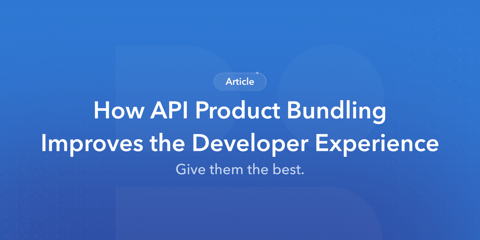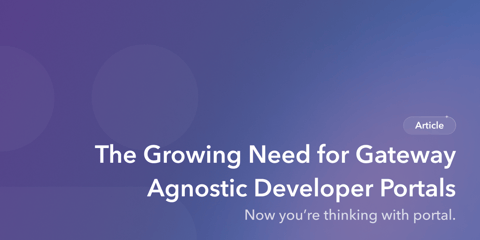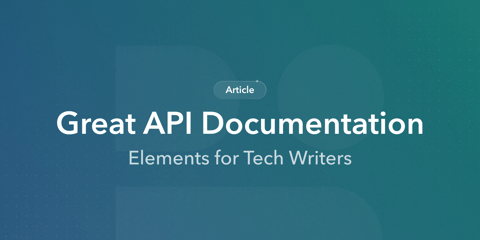There are good reasons why a developer portal is no longer just a “nice-to-have” in 2025. Developers now expect autonomy, speed, and reliability. They want to read the documentation, test endpoints, configure authentication, and make their first successful call… ideally before lunch. Developer portals are often mistakenly seen as just documentation, but they actually play the much more essential role of the entry point to your ecosystem, where a product’s first impression (or even a brand) turns either into a habit or into abandonment. Without a clear and unified experience, integrations become guesswork, support tickets pile up, and much worse… motivated teams quietly give up.
Why a portal makes all the difference
You may have already experienced it yourself, or watched a developer try out a new tool so it resonates with you: trust is earned or lost in minutes. Expectations are high. Information must be accessible without meetings, onboarding must be simple, examples must work out-of-the-box, and change history must be transparent. And if one piece is missing, the same pattern repeats… Tabs multiply, notifications pop up, a ticket is filed… And the magic disappears.
A well-designed portal breaks that cycle. It centralizes everything a developer needs to understand, test, and deliver: specifications, guides, tutorials, access management, change history, and a reliable space to experiment. Far from being a simple doc repository, the portal is now seen as a true strategic asset: it accelerates discovery, drives adoption, and creates a new standard of reference.
Build a good developer portal
When your users land on your developer portal, accessing your API documentation should feel natural and frictionless. Making it easy to find, whether through direct links, a search engine, AI assistants, or another form of guidance, plays a crucial role in the overall experience.
It all starts with clear, actionable documentation. A structured OpenAPI definition ensures an explicit contract: examples are realistic (no placeholders), guides cover concrete journeys (authentication, first call, error handling, webhooks, etc.). Documentation combines prose and specifications so that developers and machines speak the same language.
Onboarding must be fast and efficient. Nothing beats a short tutorial that leads to a successful call: in a matter of minutes, developers understand the platform’s value. Each step is clear, with no broken links. When onboarding is simple and guided, teams deliver faster and stay longer.
Exploration tools change the game: it is no longer just about reading, it is about doing. Search and filtering guide developers to the right endpoint, an integrated API Explorer allows live testing from the browser, and results instantly show how inputs map to outputs. The outcome: fewer questions, more confidence, and a safer path to adoption.
Account management is another common stumbling block. Authentication must be clear and testable, access management must reflect reality (public, partners, internal), and when appropriate, trial or guest access should exist. The best portals integrate identity and authorization into the developer journey instead of turning them into obstacles.
The direct benefits for Developer Experience (DX)
The impact shows in measurable results. Time-to-first-call drops when the path to success is obvious. Support volume decreases because answers are already in the docs and guides. Feedback improves: instead of “how do I authenticate?”, developers ask “how should I model this use case?”, which drives valuable product insight. Adoption also spreads virally: when one team succeeds quickly, others hear about it on Slack, in meetings, or through onboarding templates, and they repeat the process.
Some of our case studies
Taking the unified portal approach also means building on a solid foundation of processes that smooth the experience both for developers and for consumers of your APIs. At BigID, before their redesign, teams juggled YAML files across tickets and emails. The result was lost time and inefficiency. Moving to a docs-as-code workflow (centralized, versioned, automated) allowed technical writers and engineers to collaborate on a single source of truth. After launching their new Bump.sh-powered portal (with access management and automated changelogs), an internal survey reported an 85% increase in satisfaction with the documentation site and a 90% increase with the documentation process. Beyond the tools, it was the shift from chaos to clarity that made the difference.
In aviation, AvioBook faced a different challenge: managing multiple versions and protocols in one place. Consolidating OpenAPI and AsyncAPI into a single, branded portal with proper access management made discovery and governance possible at scale, something Swagger UI could not handle in their environment. The result: less time spent explaining “where things are” and more time integrating, with a clear standard for how APIs are documented and consumed.
Best practices for building it
A portal is living infrastructure. Automate what can be automated: generate documentation from OpenAPI/AsyncAPI, sync it with CI/CD, and ensure every merge updates the public truth. Drift between code and docs, between versions, or between what support says and what the portal shows is the enemy. Closing that gap is how trust is built.
Choose tools that fit your operating reality, not an idealized slide deck. Some teams need detailed governance and a full CMS, others need a lightweight portal focused on clarity. If your goal is self-serve adoption, invest in reducing friction: discoverability, reliable examples, clean authentication, a responsive Explorer. If your goal is partner enablement, prioritize role-based access and environment separation. The right choice is the one that makes the right path the easiest. And by providing a solid, comprehensive, and up-to-date portal, you build long-term trust with your users.
Make the portal yours. Branding and tone are not cosmetic: they signal quality and make navigation easier. Structure should reflect how users think about your domain, not your internal organization. A good portal reads like a good product: clear, intuitive, and helpful.
Invest in powerful search. Chatbots or advanced search engines only work as well as the content behind them. That means comprehensive documentation, stable URLs, and rich metadata. Done right, your portal’s search becomes a private Google for your APIs, and your content becomes discoverable externally as well, making the portal both a top-of-funnel asset and a daily tool.
Mistakes to avoid
Most failures are predictable. Neglecting the simplest use cases (first authentication flow, first GET, first webhook) guarantees frustration. Hiding documentation behind mandatory sign-up blocks exploration and forces commitment before evaluation. Keeping outdated or untested endpoints online destroys trust. This is why high-quality portals make the happy path clear, edge cases explicit, and deprecations clearly marked.
What the “next-gen” looks like
The bar keeps rising. Access is differentiated by audience (public, partner, internal) within a single coherent experience, not spread across microsites. The API Explorer is integrated natively, with realistic environment and token handling. Documentation stays in sync with the spec because updates are automated. A transparent changelog and migration notes prevent surprises. Around this core, community features (examples, feedback) transform the portal from a static library into a living system. This is not hypothetical: leading platforms are already doing this in 2025.
Conclusion
Developer portals decide which APIs are adopted and which are ignored. When the experience is coherent, documentation is credible: your API doc is efficiently integrated into your dev portal and is accessible, the Explorer invites experimentation, authentication is frictionless, and changes are transparent, developers move forward with confidence. When that is not the case, nothing else matters.
If you want to turn your portal into a strategic advantage, start with the first ten minutes of a developer’s experience: one guide, one successful call, one concrete path. Nail that, then scale. And if you want to skip the trial and error, our team is here to help you design an API experience that developers actually enjoy. Let’s talk.


